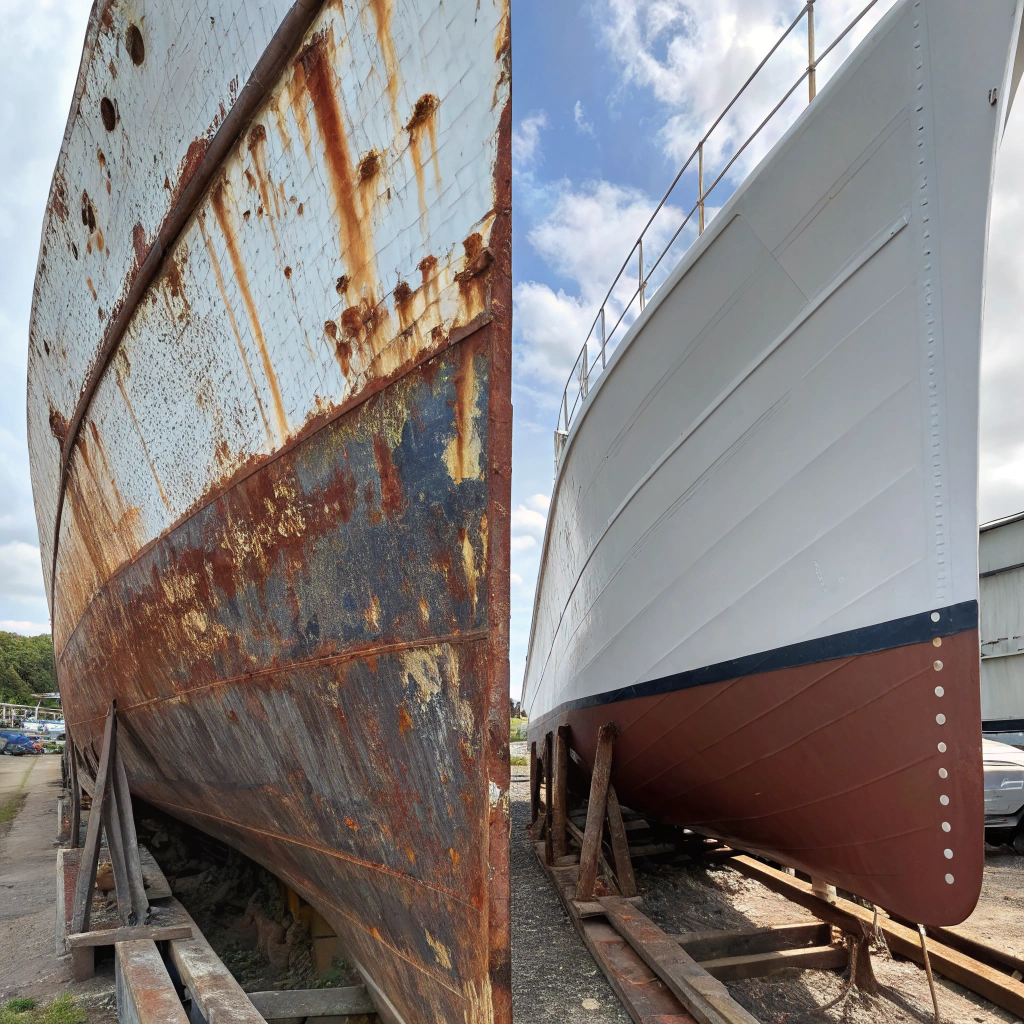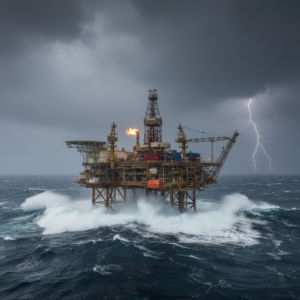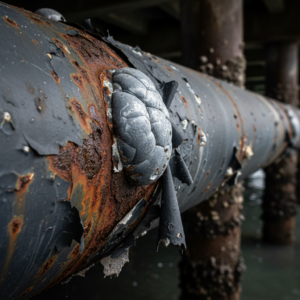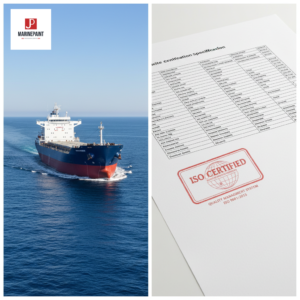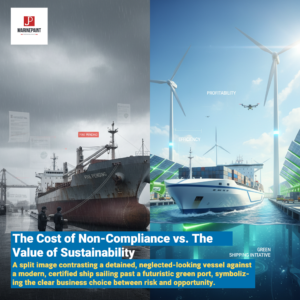How to Choose the Best Anti-Corrosion Marine Paint?
The relentless marine environment attacks your vessel's metal surfaces daily. This isn't just a cosmetic issue; it's a direct threat to your asset's integrity, safety, and value.
Anti-corrosion marine paint is a specialized protective coating system engineered to safeguard metal assets in harsh maritime conditions. It functions by creating an impermeable barrier that shields steel, aluminum, and other metals from the electrochemical process of corrosion caused by constant exposure to saltwater, humidity, and atmospheric chemicals [2]. A high-performance marine coating system is the most critical investment you can make in your vessel's longevity and structural integrity. Choosing the right marine paint for metal not only prevents destructive rust and degradation but also enhances operational efficiency by maintaining smooth surfaces, improves safety by preserving structural strength, and protects the long-term value of your marine assets [23]. This guide provides a foundational understanding of these essential coatings.
![[Image Placeholder]**Prompt:** A dramatic side-by-side comparison photo. On the left, a severely rusted and corroded section of a ship's hull. On the right, the same section after being restored, looking pristine with a fresh, glossy coat of anti-corrosion marine paint. [Image Placeholder]**Prompt:** A dramatic side-by-side comparison photo. On the left, a severely rusted and corroded section of a ship's hull. On the right, the same section after being restored, looking pristine with a fresh, glossy coat of anti-corrosion marine paint.](https://jdmarinepaint.com/wp-content/uploads/2025/07/a-dramatic-side-by-side-comparison-photo-on-the-l-2.png)
Now that you understand why this protection is non-negotiable, let's explore the different types of marine coatings available. Selecting the correct formula is the key to ensuring your vessel can withstand the elements for years to come.
What Are the Different Types of Anti-Corrosion Marine Paint?
Choosing the right paint can feel overwhelming. You see terms like epoxy, polyurethane, and antifouling, but what do they mean for your boat or ship? Selecting the wrong type of marine paint is a costly mistake that can lead to premature coating failure, forcing you to do the work all over again. Understanding the specific function of each formula is crucial for applying the right protection to the right area of your vessel, ensuring you get the durability and performance you paid for.
The best coating system depends entirely on the part of the vessel and the environmental challenges it faces.
- Epoxy coatings are the foundation of many high-performance marine coating systems. They are prized for creating an incredibly tough, durable, and chemical-resistant barrier with excellent adhesion to properly prepared metal surfaces [2]. They are ideal for areas requiring long-term protection, like ballast tanks and underwater hulls, often serving as an anti-corrosive primer [1][2].
- Polyurethane coatings are topcoats valued for their exceptional UV resistance and ability to retain a high-gloss, attractive finish [11]. Applied over an epoxy primer, they protect above-waterline areas like the hull, superstructure, and deck from weathering and sun damage [2][11].
- Zinc-based primers provide "sacrificial" protection. Through a process explained by the science of galvanic corrosion, the zinc in the primer corrodes first, sacrificing itself to protect the underlying steel [24].
- Antifouling paints are applied to the underwater hull to prevent the growth of marine organisms like barnacles and algae, which create drag and reduce fuel efficiency [3][17].
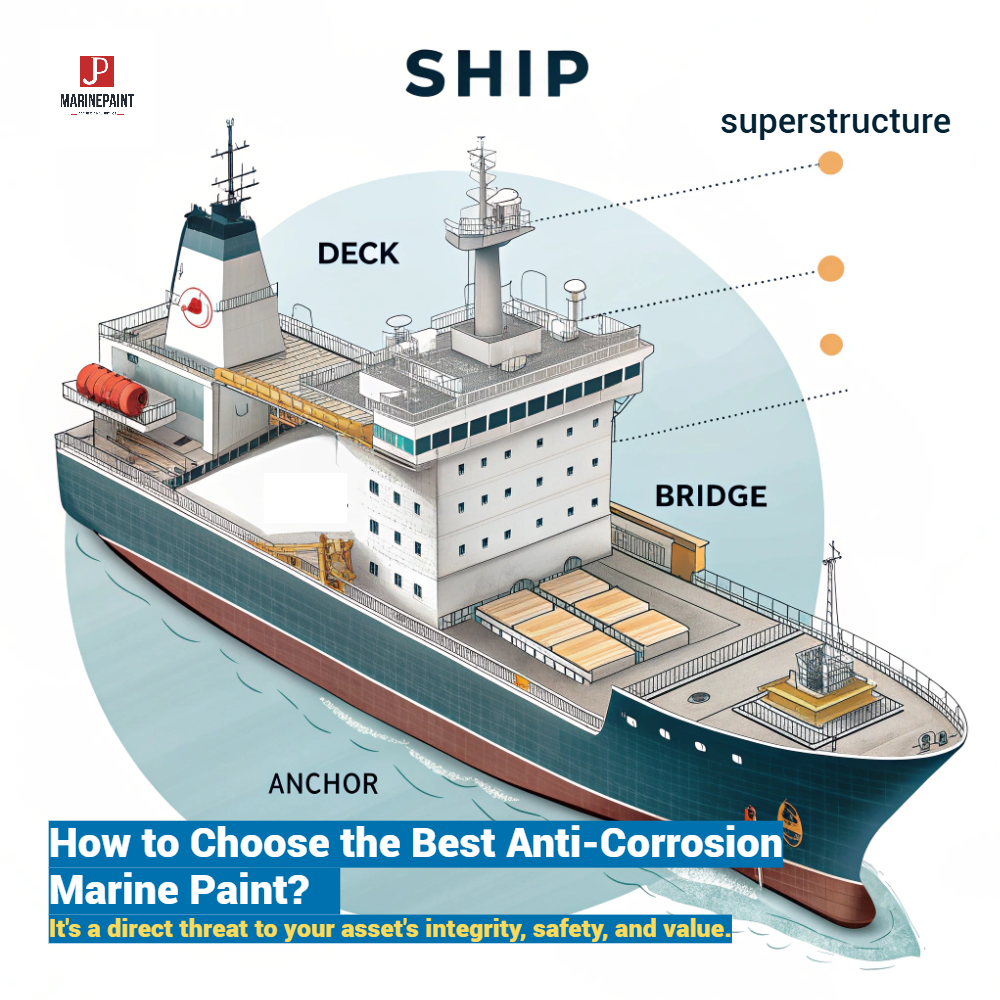
High-Performance Systems: Epoxy and Polyurethane Coatings?
For maximum durability, professionals rely on a multi-layer system. The real strength comes from combining the powerful anti-corrosive properties of epoxy primers with the aesthetic and UV-resistant qualities of polyurethane topcoats.
An epoxy primer like our JDH815 Iron Oxide Red Epoxy Primer creates a tenacious bond with the metal substrate, forming a hard, impermeable barrier that is the first line of defense against saltwater corrosion [2]. Over this foundation, a topcoat such as JD918 Acrylic Polyurethane Hull Paint (Yellowing resistance) is applied. This layer shields the epoxy from sunlight, which can cause it to degrade, and provides a smooth, glossy finish that is easy to clean and resistant to abrasion and weathering [11]. This two-part approach is the gold standard for protecting topsides, decks, and superstructures.
Below the Waterline: Antifouling vs. Anti-Corrosive?
It's a common point of confusion, but their roles are distinct yet complementary. Anti-corrosion primers (typically epoxy) are applied first to the bare metal to prevent rust. Antifouling paint is then applied over the anti-corrosive system. Its job is not to stop rust but to release biocides or create a slick surface that deters marine life from attaching to the hull [3][13]. Effective biofouling management is critical for vessel performance and is regulated by international standards for marine coatings. For this, products like our JD753 Tin-free self-polishing antifouling paint offer long-lasting protection. A tie coat, such as JDH263 Epoxy Tie Coat, is often required to ensure proper adhesion between the epoxy anti-corrosive and the antifouling paint [8][14].
A Comparison of Main Marine Paint Types
| Coating Type | Primary Use | Key Advantages | JDmarine Paint Example |
|---|---|---|---|
| Epoxy Primer | Underwater & topside primer, ballast tanks | Excellent adhesion, chemical/corrosion resistance, tough barrier [2]. | JDH06-4 Epoxy Zinc-Rich Anti-Rust Primer [4] |
| Polyurethane Topcoat | Topside, deck, superstructure finish | High gloss, UV resistance, color retention, durability [11]. | JD908 Acrylic Polyurethane Topcoat Non-Yellowing Resistant [20] |
| Antifouling Paint | Underwater hull | Prevents marine growth, improves fuel efficiency [3][13]. | JD713 Chlorinated Rubber Antifouling Paint [5] |
| Alkyd Paint | General use, decks, boot-topping | Economical, easy to apply, good for general maintenance [6][21]. | JDC43-31 Alkyd Hull Paint [5] |
| Specialty Coatings | Potable water tanks, heat resistance | Formulated for specific, demanding applications. | JDH912 Epoxy Potable Water Tank Coating [5] |
What Are the Best Practices for Applying and Maintaining Marine Coatings?
You've invested in a high-performance marine coating, but the job is only half done. Even the most expensive paint will fail if applied incorrectly. Poor surface preparation or a rushed application traps contaminants and moisture, leading to blistering, peeling, and rapid corrosion underneath the new paint film. This not only wastes your investment but also leaves your asset vulnerable, requiring costly rework.
Proper application is a science, and it begins with meticulous surface preparation. The substrate must be absolutely clean, dry, and free of any contaminants like salt, grease, or old, flaky paint before a single drop of new primer is applied [9]. For steel, this typically means abrasive blasting to a Sa2.5 standard for optimal performance or power tool cleaning to an St3 standard for maintenance [16][19]. Following this with the correct application technique and adhering to drying times is what ensures the coating system achieves its maximum protective lifespan [12].
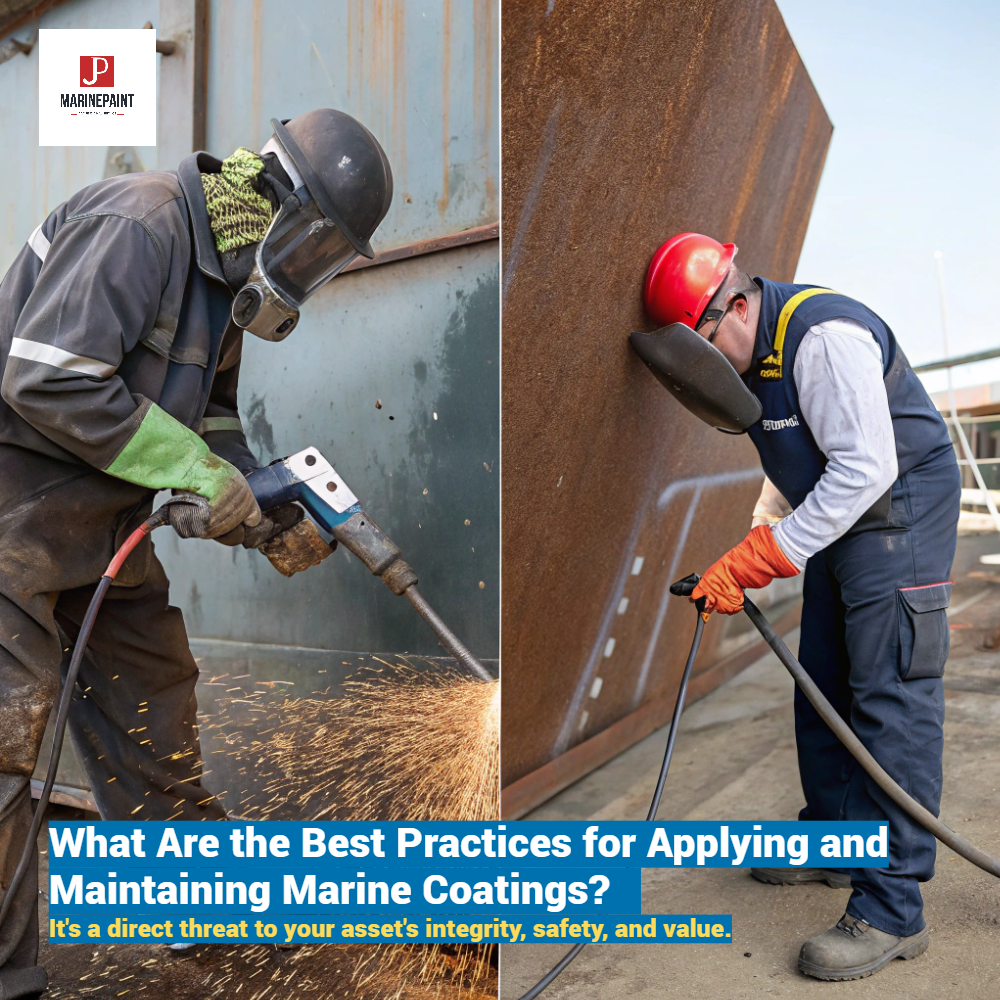
Why is Surface Preparation Non-Negotiable?
Industry experts agree that up to 80% of all coating failures are due to inadequate surface preparation. A protective coating can only adhere to the surface it is applied to. If that surface has rust, oil, salt, or moisture, the paint is sticking to the contaminant, not the metal.
- Cleaning: First, remove all oil, grease, and surface contaminants with a suitable solvent or detergent [9]. After that, high-pressure freshwater washing is essential to remove salt deposits, which are invisible but highly corrosive.
- Rust and Mill Scale Removal: The "cleanliness" of steel is defined by international standards. For best results, steel should be abrasive blasted to Sa2.5, which removes all visible contaminants, leaving a uniform, rough profile for the primer to grip [16][25]. For spot repairs or areas where blasting isn't feasible, power tool cleaning to St3 is a viable alternative, which removes loose rust and paint [19][25].
A Step-by-Step Guide to Application
- Prime Immediately: Once the surface is prepared, apply the first coat of anti-corrosive primer as soon as possible to prevent flash rusting [15]. For zinc primers like JDC53-37 Zinc Grey Alkyd Anti-Rust Paint, this provides immediate protection [4][25].
- Build the Correct Film Thickness (DFT): Each coat—primer, intermediate, and topcoat—is designed to be applied to a specific dry film thickness (DFT) [12]. Applying too thin a layer offers insufficient protection, while too thick a layer can result in improper curing and cracking. Use a wet film gauge during application to ensure you're on track.
- Respect Recoat Intervals: Each paint product has a specified window of time for applying the next coat [22]. Applying the next layer too soon can trap solvents, while waiting too long may require abrading the surface to ensure inter-coat adhesion [22].
- Final Curing: Allow the complete system to fully cure according to the manufacturer's specifications before subjecting it to the harsh marine environment [22].
For those managing large fleets or critical assets, ensuring these steps are followed correctly is paramount. The work of paint applicators is often overseen by inspectors with professional certification for coating inspectors to guarantee quality control.
Answering Your Top Questions About Anti-Corrosion Marine Paint?
What is the strongest coating for metal?
Epoxy coatings are widely regarded as the strongest and most durable for direct-to-metal application in a marine setting. Their two-component chemical structure cures into a hard, non-porous film with exceptional adhesion and resistance to water, chemicals, and abrasion [2].
What paint prevents rust on metal?
Rust prevention is the primary job of an anti-corrosive primer. Zinc-rich primers, like JDH06-4 Epoxy Zinc-Rich Anti-Rust Primer, offer outstanding protection by providing a sacrificial barrier [4]. Other high-performance rust-inhibiting primers use different pigments, such as iron oxide or aluminum, in an epoxy or alkyd base, like our JDC53-35 Aluminum Iron Alkyd Anti-Rust Paint [4][16].
Does painting over rust stop it?
Absolutely not. Painting directly over existing rust is a critical error. The rust traps moisture and oxygen against the metal, allowing corrosion to continue and even accelerate beneath the new paint film. The surface will quickly blister and peel. All rust must be mechanically removed (to St3 or Sa2.5 standard) or treated with a rust converter before any priming [10][19].
What is the best paint for metal surfaces in a marine environment?
There is no single "best" paint, but rather a best "system." For ultimate protection, a system combining a high-build epoxy anti-corrosive primer with a polyurethane topcoat is the superior choice for above-the-waterline areas [2][11]. For underwater surfaces, an epoxy primer followed by a quality antifouling paint is essential [2][3].
Conclusion
Protecting marine assets from corrosion is an investment in safety and longevity. Choosing the right anti-corrosion marine paint system and ensuring its meticulous application is absolutely essential.
![]()

